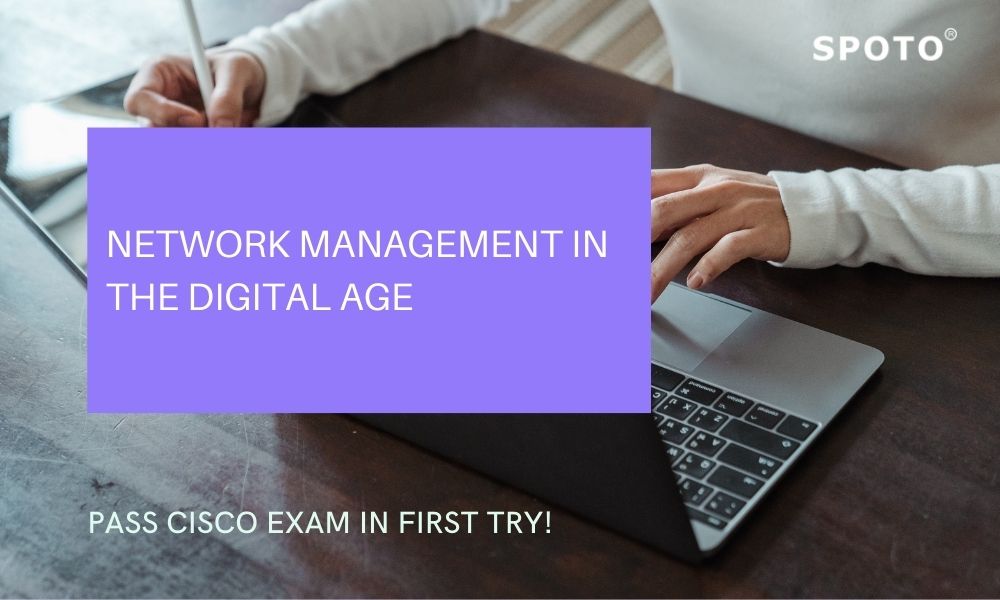Network management in the digital age

Table of Contents
Take heart if you are trying to manage your network and spending hours making sure all devices are correctly set, reading through countless logs to uncover the underlying cause of difficulties, and asking why you don't have better tools.
You place a high value on your network. After all, it is the network that defines the consequences of your company endeavors in significant part. Whether you're looking to improve your company processes or your consumer experiences, you're going to need to rely on your network. The network must expand, perform, maintain security, and most importantly, be agile to react to the inevitable, and sometimes rapid, changes that occur when your projects adjust to constantly evolving ground realities.
Networks are becoming more complicated to satisfy the increasing demands of users, devices, objects, apps, and the cloud, and enterprises are having difficulty managing them to fulfill their business needs. They frequently employ numerous tools, perform manual CLI setups, and troubleshoot by attempting to recreate the situation and reading over logs. This takes too long, is prone to errors, and consumes network engineers' time with low-value tasks.
This is the first in a series of posts about various facets of intent-based networking.
The Ascension of the Intent-Based Network
As a result of these problems, enterprise networks are transitioning to an intent-based networking model. In contrast to traditional networks, where many day-to-day activities are manual, intent-based networks (IBN) automate the network's essential functionality. They take high-level business intent as input, transform it into network policies, configure network devices to carry out the policies and monitor these devices to ensure that the policies are followed. Because of this set of capabilities, IBN is suited for reaping the benefits you foresee from your digital transformation activities.
The network controller is at the center of an intent-based networking deployment. Network controllers exemplify network management's growth from simple element managers to more powerful network managers and SDN controllers. While the development of SDN controllers increased software control, automation, and programmability, it was limited in scope and manufactured to order. On the other hand, full network controllers go beyond SDN controllers and contribute to the realization of the whole concept of intent-based networking.
At the center of intent-based networks are network controllers.
Network controllers perform the necessary policy, activation, assurance, security, and integration services critical to implementing an intent-based network.
Policy: Controllers accept as input business intent and translate it into network policies. For example, the controller may understand the intention to hold a multiparty telepresence conference at 10 a.m. to implement appropriate bandwidth, QoS, and encryption procedures in the wired and wireless campus and WAN networks.
Activation: Controllers activate the underlying network infrastructure, which is made up of switches, routers, and wireless equipment, by producing the necessary configurations and provisioning the devices following the stated policy. The controller, in our case, would arrange network devices to provide the given service levels.
Assurance: Controllers examine network data to identify any problems preventing the network from behaving following policies. For example, the controller may identify a loss of video quality in a network segment, determine the root reason, and give the user the necessary remedy.
Security: Controllers have complete insight into the network's users, devices, things, and applications. This enables them to spot odd behavior or anomalies that may indicate a threat. Controllers might take precautionary measures to protect the workplace, workloads, and personnel.
Controller APIs allow for programmatic two-way interaction between the network and external business and IT applications. These APIs also enable controllers to communicate with one another to synchronize the fulfillment of shared business intentions across numerous networks. An external program, for example, may direct the controller to configure devices for an important meeting.
Conclusion
Controller-led architectures are becoming indispensable due to their range of capabilities. Organizations are discovering that they can significantly reduce manual effort, minimize security risks, save operating costs, boost regulatory compliance, and ensure that the network is continually changing, learning, and aligning with business demands. If you want to know more about Cisco knowledge, please try SPOTO Cisco exam dumps to learn the latest technology! Please try the SPOTO Cisco training course and Cisco exam dumps to help you get the Cisco certification on the first try!
